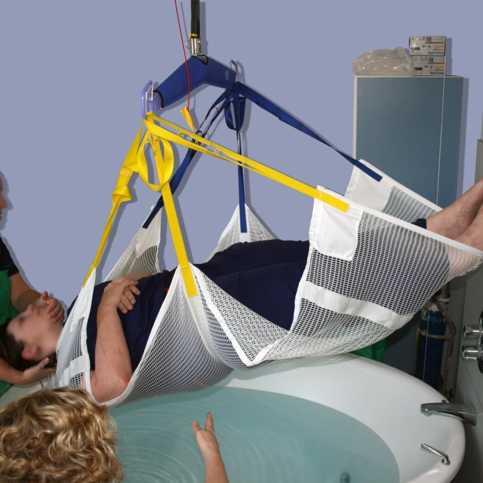
Watch/Listen To The Video Version Of This Article
As a practicing midwife for over 36 years (33 years as a waterbirth champion), I totally understand colleagues concerns about emergency evacuation from a fixed birthing pool either in a birth centre or hospital. Firstly, may I stress this is an incredibly unusual occurrence, and although I teach a skill drill and have a competency program which discusses / practices this issue, I have never directly had to evacuate a mother.
In circumstances where I have been involved and asked to assist, the clinical situations have often been the same.
• The room has become too hot – maybe water, room, and maternal temperature not closely monitored. Water may be too deep (at neckline) instead of between breast and bump with allows heat to evaporate through the upper torso. No ventilation in room or mother not drinking sufficient.
• Midwife not identifying blood loss has gone from normal (rosa) through to sangria (large blood clots) to cabernet (dark red) and being unable to see bottom of pool or mothers’ legs. However, things are not this simple which is why I teach “If in doubt get the mother out”
As this has been an ongoing concern I always teach at my study day about how to safely evacuate a mother. In conjunction with moving and handling officers, I worked with a company called “Siverlea” www.silvalea.com who produce a birthing sling for manual or electric hoist evacuation.
When using a fixed pool in a hospital or birth centre it is possible to emergency evacuate using the sling with 3 people. In some environments, four people may be available which makes the evacuation easier and faster, even if an electrical hoist is available.
The bed/trolley should be moved to the edge of the pool at the same height, brakes applied, and water-filled to allow for extra buoyancy (if time permits). Floatation aids (water neck supports/ water noodles) can be used to support the mother. Using a gentle combined in time “bounce” all four corners of the sling are lifted, and with ONE TWO LIFT, the mother in the sling is lifted out of the water and to edge of pool/bed. The next move is to slide the mother up bed/trolley to complete the evacuation.
Skills drill being undertaken- in a real-life situation, the mothers head would be parallel with her body and not tilted downwards as these midwives are showing. The net would be on shorter loops to preserve a straight maneuver.

This tried and tested evacuation has rarely been required but should be part of mandatory training and ad hoc skills drills.
Emergency staff should have already been summoned and health/ safety risk assessed. Water spillage should be cleared to ensure a safe working environment.
A Silverlea sling costs £150 (UK). Electric hoists cost several thousand pounds.
Emergency evacuation is a serious concern for midwives but can safely and easily be resolved through robust clinical care and skills drills.



Post a Comment